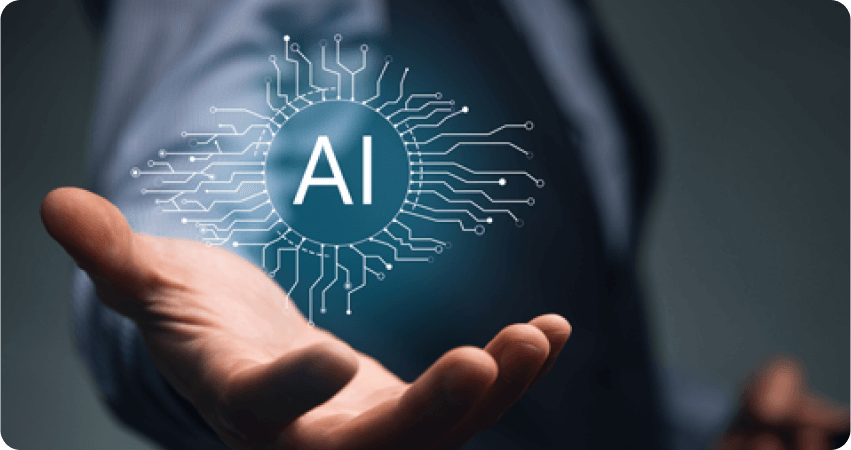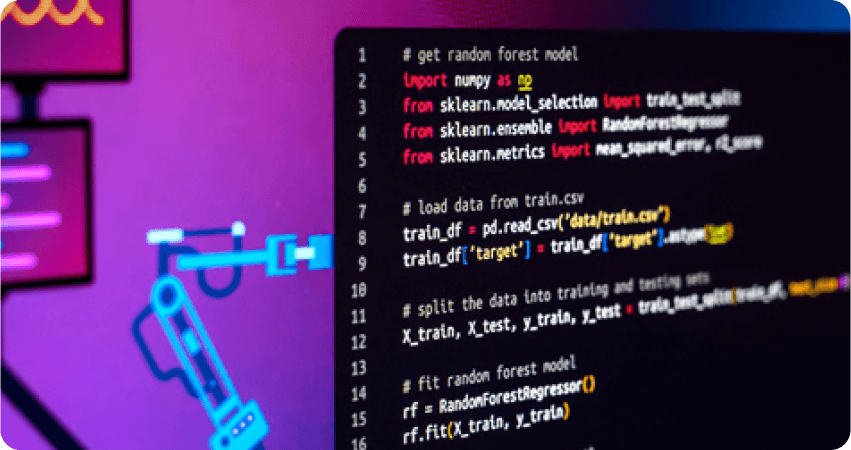Artificial Intelligence and Cybersecurity: A Comprehensive Discussion
Welcome to digital evolution, where the rapid growth of technology has woven an intricate tapestry of innovation and connectivity. At the heart of this transformation lies Artificial Intelligence (AI), a field seeking to impart machines with human-like intelligence and problem-solving prowess.
Welcome to digital evolution, where the rapid growth of technology has woven an intricate tapestry of innovation and connectivity. At the heart of this transformation lies Artificial Intelligence (AI), a field seeking to impart machines with human-like intelligence and problem-solving prowess. With AI’s potential to revolutionize industries like healthcare and finance, it’s no wonder the world is abuzz with excitement. But as AI’s power and capabilities soar, a shadow of concern looms over cyber security.
Cyber security, the guardian of computer systems, networks, and precious data, is a paramount concern in today’s interconnected landscape. As cyber threats grow in sophistication and pervasiveness, the question on everyone’s mind is whether AI will be a formidable ally or a dangerous adversary in this never-ending battle.
Let’s embark on a discussion, delving into each side of AI’s impact on technology and uncovering the truth: Will Artificial Intelligence be our savior or jeopardize cyber security?
AI: A Double-Edged Sword
The experts issue warnings and sci-fi tales play on our fears, cautioning us about the dark side of AI. Visionaries like Steve Wozniak and Elon Musk have voiced concerns about the profound risks AI poses to society. While it might sound like a far-off dystopian future, the digital realm faces genuine threats from AI-driven cyber attacks.

AI’s Power to Inflict Extensive Damage
The most pressing concern arises from AI’s potential to magnify the impact of cyber attacks. AI-driven malware and hacking tools can adapt, learn, and morph, rendering them formidable foes that evade detection and outsmart traditional defenses. The result? Devastating attacks that leave individuals, businesses, and even critical infrastructure in ruins.
Picture a malicious AI software generating deepfake voices, flawlessly mimicking top-level executives. Armed with such a convincing facade, attackers can easily deceive employees into authorizing unauthorized financial transactions, bypassing security protocols. Or imagine AI manipulating data, crafting a seductive yet entirely fraudulent investment portfolio that leads to financial ruin before the deceit is exposed.
AI Can Exploit Digital Vulnerabilities
AI’s prowess in analyzing vast data volumes has a darker implication – easier manipulation of digital vulnerabilities. Cyber attackers exploit these weaknesses with newfound precision and speed, slipping through even the most robust firewalls undetected.
According to a survey by cybersecurity firm Webroot, over 90% of cybersecurity professionals anticipate AI-driven cybercriminals targeting AI-controlled customer recognition software or AI pricing algorithms. From shady competitors attacking rival algorithms to cyber-thieves preying on financial institutions, the threat is real and growing.
The Rise of Exponential and Sophisticated Threats
AI bestows cybercriminals with the power to craft sophisticated and diversified threats. AI-generated phishing attacks weave personalized messages, mimicking human language and behavior, fooling even the most vigilant.
As the cyber threat landscape evolves, the demand for skilled cybersecurity professionals has reached unprecedented levels, with a shortage of 3.4 million experts globally, according to the 2022 Cybersecurity Workforce Study by (ISC).
However, there is a positive aspect to the story of AI – one that offers hope and safety.
AI and Cybersecurity: Working Together for a Safer Future
Just as technology can be a force for good, AI holds the potential to bolster our quality of life. Visionaries like Mark Zuckerberg and Eric Schmidt are optimistic about AI, highlighting its potential benefits. The 2023 World Economic Forum recognizes the positive changes AI can bring to the world, especially in cyber security.
Artificial Intelligence Strengthening Industrial Cybersecurity
Critical infrastructure faces unique cyber threats, but fear not, AI-powered solutions are here to safeguard these vital systems. Picture power plants and transportation networks under constant AI surveillance, detecting real-time anomalies and preventing potential disasters.
AI-assisted technology optimizes and monitors data center processes, enhancing hardware and infrastructure effectiveness and security. Moreover, AI-generated insights can slash maintenance costs, alerting users to potential issues before they escalate. Google reported significant cooling and power cost reductions after implementing AI in their data centers in 2016.
Faster Threat Identification with AI
AI’s ability to analyze vast data volumes leads to quicker and more accurate threat identification. Machine learning and AI-based systems detect potential weaknesses in regular activities, alerting users before critical data falls into the wrong hands. With AI at the helm, hackers can be spotted and dealt with discreetly, ensuring digital infrastructure security.
Immediate and Accurate Threat Response
Automation has become the ultimate weapon in the fight against cyber threats. AI automates incident response, minimizing response times and human errors. Real-time threat detection and automated responses ensure that attacks are thwarted before they can inflict significant damage.
Take Google’s example from 2016, when they detected 20,000 malware-infested sites using machine learning. The scale of the internet makes manual inspections impossible, but AI enables the analysis of every site visit, identifying potential threats and taking immediate action to fortify cybersecurity.
Where are We Now in the AI Crossroads?
As AI technology expands and impacts various industries rapidly, it raises concerns about protecting our data and assets. With the increasing use of AI, ensuring our cybersecurity measures are up to par to prevent potential threats becomes crucial. A vital question looms: How can we safeguard our data and assets in the face of the impending AI revolution?

Managing Cybersecurity Challenges in the Age of Artificial Intelligence
One of the main challenges in the age of AI-driven cyber threats is the ability of attackers to launch multiple simultaneous attacks on different targets. AI empowers cyber attackers to coordinate distributed denial-of-service (DDoS) attacks while deploying phishing emails to deceive unsuspecting employees. These coordinated attacks make it challenging for cybersecurity teams to detect and respond quickly, increasing the risk of successful breaches.
Another critical challenge is the constantly evolving nature of AI-driven attacks. These threats mutate and adapt, making it difficult for traditional reactive cybersecurity measures to keep up. Conventional security solutions rely on known attack patterns, but AI-generated threats can produce convincing phishing emails or employ AI-powered ransomware, which encrypts files precisely. As a result, organizations must transition to new cybersecurity approaches incorporating AI for proactive defense.
Identifying and tracking these AI-driven threats is also a costly endeavor. It requires a skilled and united effort between the public and private sectors, as attackers leverage inexpensive resources while defending against them demands substantial investments in expertise and resources.
What’s Currently Lacking and Abused by Digital Threats
As technology continually advances, digital threats become more sophisticated, and the need for robust cybersecurity measures grows ever more critical. Unfortunately, there are several areas where organizations are lacking and are therefore more vulnerable to AI-driven attacks.
Operational Technology Lacking Security
Operational technology (OT) forms the backbone of critical infrastructure, powering everything from power grids to manufacturing facilities. Though isolated from the internet, these systems face a unique challenge—they are susceptible to attacks from within the organization.
Enter AI-driven attacks, the stealthy infiltrators capable of exploiting system vulnerabilities with devastating consequences. Picture this:
- An AI-driven attack targeting a power grid
- Plunging entire cities into darkness
- A water treatment plant contaminated through a cunning AI assault
This could spell disaster if not handled well and is becoming an even closer possibility if AI attacks aren’t checked
Absent Updates and Patches
Software and systems are updated regularly with security patches in the relentless race to stay ahead of cyber threats. However, the Achilles’ heel lies in delayed application. Organizations failing to apply these updates promptly become easy prey for AI-driven attackers, who capitalize on known vulnerabilities.
Take, for instance, a web application running an outdated software version—here comes the AI-driven attack, exploiting the known vulnerability, stealthily gaining access, and stealing sensitive data.
Non-Preventive Use of Cybersecurity
Reactive cybersecurity—a thing of the past, but still pervasive. Many organizations focus on remediation only after the damage is done, reacting to AI-driven attacks rather than proactively preventing them.
But here’s the truth: AI-driven attacks evolve rapidly, increasingly sophisticatedly. The reactionary approach falls short, leaving organizations vulnerable and struggling to detect and respond to these stealthy adversaries.
Embracing the Digital Future: Solutions to Safeguard Your Data and Tech
The path to navigating the AI-enhanced cyber landscape lies in embracing the potential of AI while staying vigilant against its potential dangers. As AI continues to reshape industries and push the boundaries of what’s possible, it’s best we become proactive and start securing our data and contribute to a safer digital age

Acquiring high-end digital securities such as TLS and PKI certificates
Stay ahead of the cyber game by investing in cutting-edge digital security protocols like Transport Layer Security (TLS) and Public Key Infrastructure (PKI) certificates. These powerful tools ensure data integrity and confidentiality, safeguarding sensitive information from unauthorized access, modification, or disclosure. With TLS and PKI certificates, you can authenticate users and devices, encrypt communications, and create a robust fortress for your data.
To learn more about TLS and PKI Certificates, explore what Quantum PKI offers for your security.
Investing in trusted AI-powered security solutions
Forge a formidable alliance with reputable vendors and partners to secure AI solutions with utmost scrutiny. Ensuring the integrity and safety of AI tools is paramount. By doing so, you fortify your defenses, providing that AI works as an ally, not a foe. AI can take charge of repetitive security tasks, identify and respond to threats with lightning speed, and even predict future attacks, arming your team with the foresight to thwart impending danger.
See AI-ready security solutions Quantum PKI trusts and recommends. Explore now.
Keeping an eye out for digitally secure methodologies for data and IoT
As the realm of data and the Internet of Things (IoT) expands, staying vigilant becomes crucial. Employ secure data transmission methods and embrace best practices for securing IoT devices. This proactive approach fortifies your data against unauthorized access, modification, or disclosure. You can prevent cybercriminals from exploiting vulnerable IoT devices to launch malicious attacks.
See the latest IoT systems and securities you can check here at Quantum PKI.
Conclusion
Cyber security stands at a critical crossroads in this age of AI-driven possibilities. While AI empowers attackers with sophisticated tools, it also bestows defenders with unparalleled speed and accuracy to counter these threats. Organizations must take decisive action to leverage AI for the greater good of cyber security. Invest in robust digital security measures, collaborate with trusted partners, and adopt proactive strategies to defend against emerging AI-driven threats. By embracing the power of AI and staying vigilant, we forge a safer and more secure digital future. To learn more about AI, Cybersecurity, and other tech-related topics, check out our blogsand whitepapers from experts here at Quantum PKI.